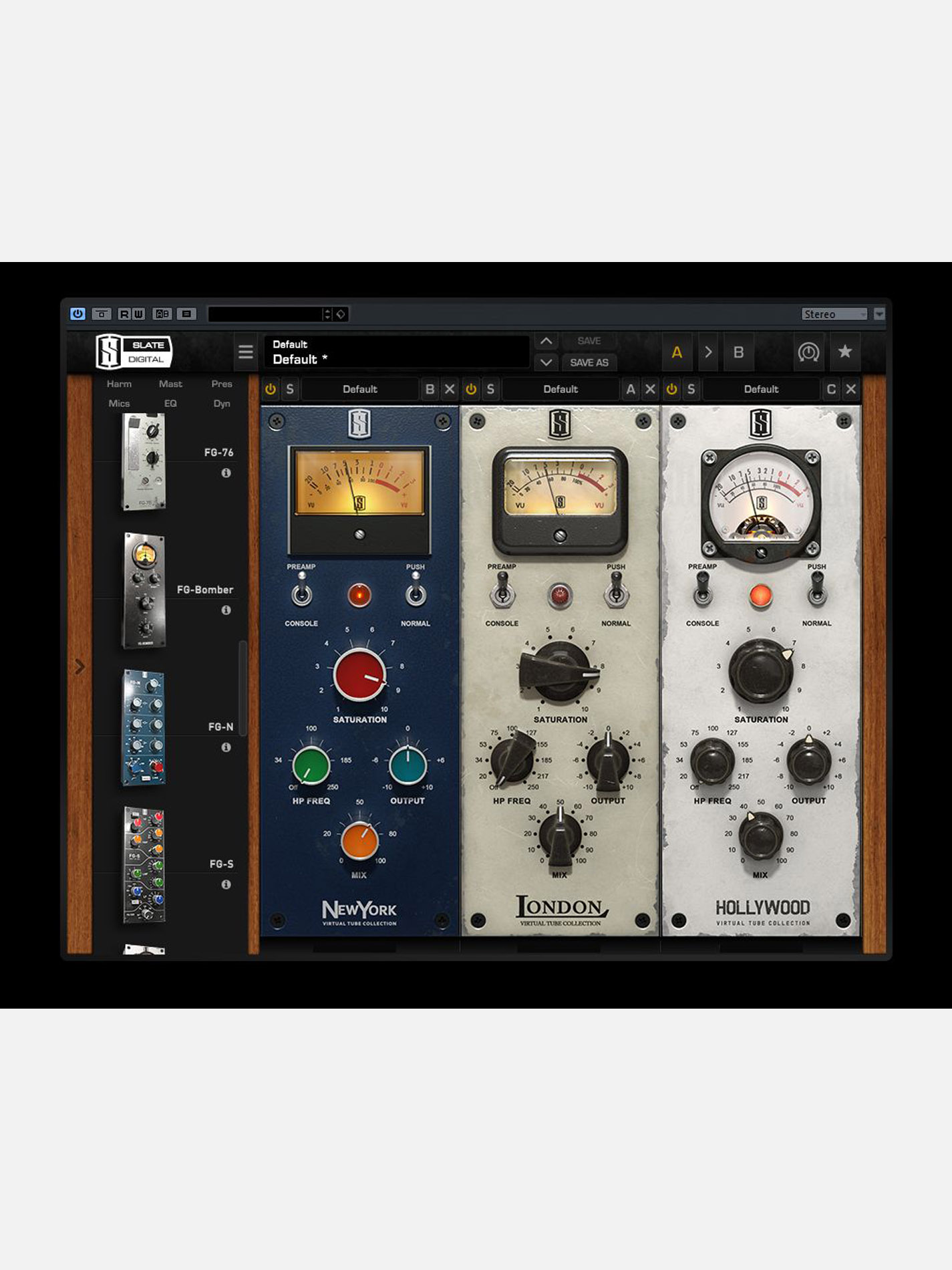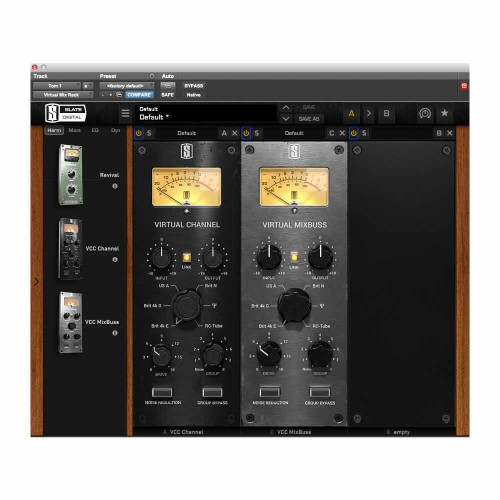

You can have up to eight groups or have channels independent. The mix bus plug-in has stereo VU meters, console selection and drive control.īoth plug-ins have a group option which opens up an advanced settings panel for grouped settings. For the channel, there is a VU meter at the top, console selection knob, an input trim to tweak + or – 6 dB and a drive control which gives you control over the non-linear saturation with + or – 6 dB. The interface is really simple and easy to understand right away. It’s not a huge dramatic change, but it makes a noticeable difference. If you push them hard, the console reacts differently this is completely unlike what you’re used to mixing digitally. RC-Tube, a hybrid of two vintage RCA tube broadcast consolesĮach console algorithm is made to match the frequency response and overload reaction of the original console.

The channel plug-in models the inputs of the console, while the mix bus plug-in is the summing and main out of the console, and it includes some crosstalk in the algorithm. You can also use the mix bus plugin on submixes if you prefer. I had previously mixed a project with the Vision, Slate VCC and VMR (with some.

#Slate vcc neve software
Generally you stick the mix bus on the master fader and a channel on every track of your project. Track and mix with endorsed software emulations of Neves hardware. Impossible in real life, but accomplished in a minute with VCC.Īctually VCC is a pair of plug-ins – the channel and the mix bus. Say you wanted your guitars mixed on an SSL, drums on a vintage Neve, bass on a vintage RCA tube console, everything else through a Trident console and finally all those tracks summed through an API. Not only that, but you get a choice of several consoles that you can use in any combination. VCC is a plug-in that claims to make your mixes sound more analog and to make your DAW react exactly like an analog console. There was SO MUCH HYPE about this product that I was completely put off by the idea of it and tried to ignore it for a while. When it was released a while back, Steven Slate’s Virtual Console Collection (VCC) was one of those so-called game changing plug-ins. Every new plug-in is announced as a “total game changer.” It seems like every few weeks there some new piece of audio software that claims to make your music bigger, louder, deeper, and more badass in every way. I never gave them much credit in the past because the Neve and API aren’t as good as the UAD, but when your UAD card is out of DSP, it’s a whole different scenario.This article is provided by Audio Geek Zine. And of course I use the shit out of his Neve EQ and bus comp, smokes the waves V. One work-around that I was pretty impressed with was the Kush Omega units. I also really enjoy the revival, monster and bomber as well as the air EQ. You don’t notice it as bad if its on a bass guitar or a kick drum, but for everything with sensitive information higher than like…4k it just seems to destroy detail somehow. it makes whatever its on sound less open. Its like the 3rd order harmonics above 7k fall right off a cliff. Even with the drive wide open, the i/o decoupled, and input attenuator in the sweet spot, the Slate VCC just damages everything. Try placing that thing on a violin section, or a smooth airy ambient female vocal and you’ll hear the problem. I just can not get that Slate VCC to dial in for the life of me. I have no idea why the hell they put a ‘mic’ button on the NLS channels that was so poorly implemented…it sounds better with the damn thing off! Wow - that thing is useless!!! It seemed to give me the nicest balance of overall warmth and clarity. Surprisingly, I ended up choosing the Trident setting, with input levels set at +3 and the Drive setting at +2.

That saturation knob just SHINES compared to some of the other Waves preamp emulators. Mix using Slate VCC : As an offshoot of the current thread about the Slate VCC collection, I thought Id experiment a bit and post a mix I did recently, using the Slate VCC on the 2-bus. What I did find is that the Scheps Omni strip is one of the best saturation emulators that Waves makes. I even went on the Waves FB group to figure out why the mic pres on the channel strip were so unusable. I spent all morning dicking around with that NLS trying to get good enough preamp saturation in a way that could replace the UAD SSL E strip when I run out of DSP.


 0 kommentar(er)
0 kommentar(er)
